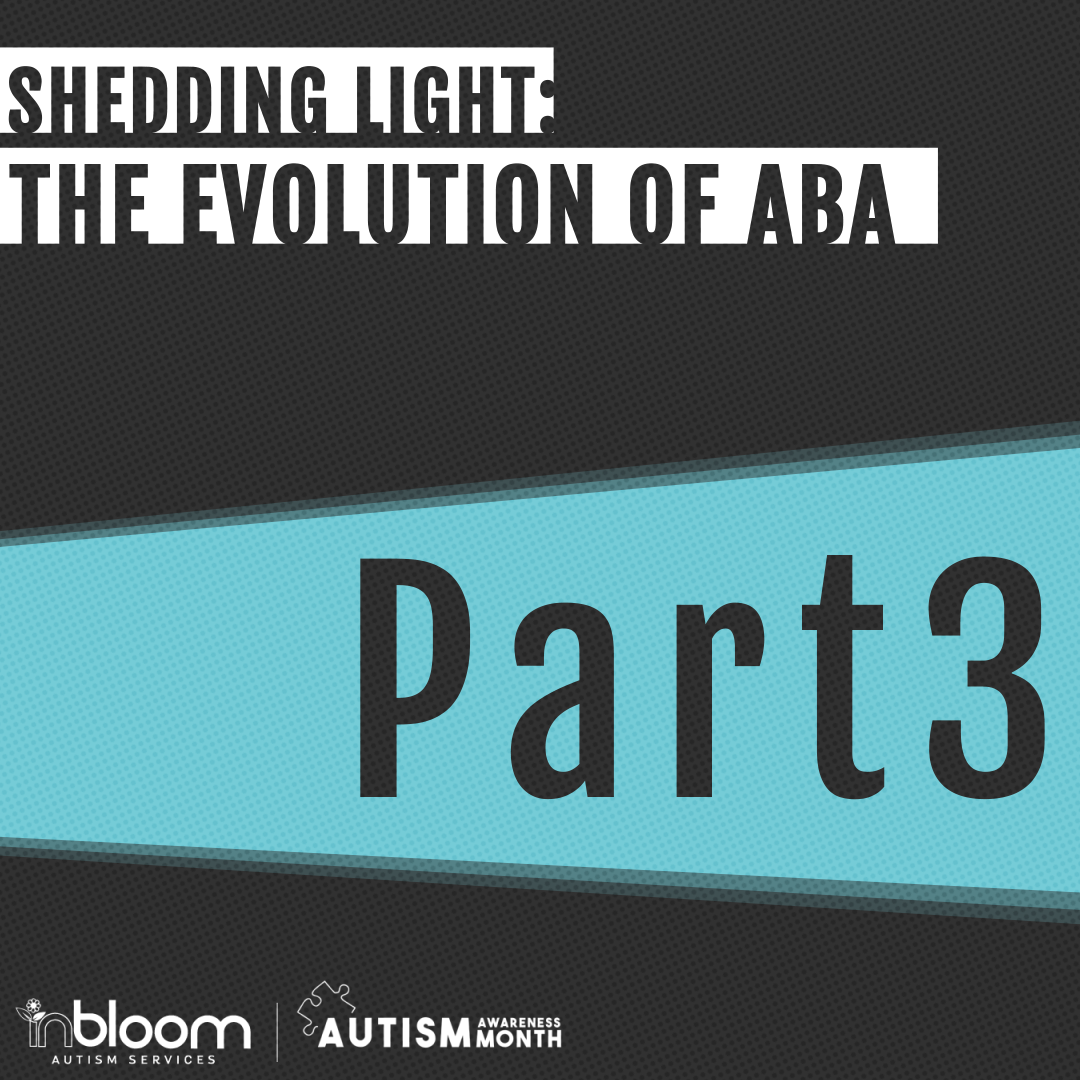ABA Speak is Weak

ABA terms are harsh. Super harsh. Why is that, and what difference does that make? And what do these terms actually mean?
Every industry has it’s list of technical terms and jargon. Sometimes you get really lucky with the jargon of your respective field.
If you get into the computing field, you might use jargon like “cookies”, “mouse”, and “chip”.
Media and marketing use phrases like “content curation”, “engagement”, and “bounce rate”.
Even auto mechanics, who we tend to think of as having a more rugged line of duty, have terms like “dynamics”, “acceleration”, and “oscillating”; Even if they’re not terms with a positive association, they are at the very least neutral sounding.
Well now, we’d like to give you a big, warm welcome to the super friendly land of ABA where we regularly use terms like “Block”, “extinguish”, “planned ignoring”, and “discrimination”.
Yikes. But not quite.
The whole practice of ABA is actually really gentle, positive, and nurturing. This was mostly just a big goof on our end. We just use terms that were crafted by a guy who didn’t really think too much about the connotations for these words outside of a clinical setting (even though he authored the book titled “Verbal Behavior”).
Our terminology isn’t all like that–We have some terms that sound nice too, like “motivation”, “positive”, and “reinforce”. It’s just that more words on average in Behavior Analysis sound harsher than the average amount of words in other fields–to the point where well-known Behaviorists have published research on this very topic!
This graph below illustrates how common words in behavior analysis fall on a grid where people have associated the terms (without understanding their application in behavior analysis) with their overall pleasantness/unpleasantness, and how motivating they are.
As you can see, in Behavior analysis, the words are almost evenly distributed on the spectrum of pleasant vs. unpleasant, but the overwhelming majority of them are shown as “unmotivating” or neutral.
When we compare those results to those of common terms in General Science, the words tend to have outside associations that are much more pleasant and neutral that unpleasant.
The way that we understand and associate words can have an impact on our thoughts and feelings of the new associations we make.
Imagine eating a sour candy, such as a “War Head”, and finding that you really do not like it. You go to a Chinese restaurant and are offered some “Sweet and Sour Chicken”. These two foods use the term “sour” to describe their foods, although in completely different ways! You associate the aversive flavor of “sour” from the WarHead to the sour chicken, and already determine you will not like it because of your former association of the word.
This can happen with other words and terms as well! For example, you find the words “Extinguish” and “punish” to be unpleasant. You don’t know much about ABA methodology, so when you hear that the names of some procedures we use are “extinguish” and “punish”, you’re likely to transfer the negative association from just the word, to the entire practice of ABA.
We want to help you understand what some of our terms actually mean! Once you see what these words really mean, you’ll start to recognize that these terms aren’t scary or harmful at all–In fact they may describe some parenting skills you already put in place in your own home!
In conclusion, we thought you might want to check out some of our most common “unpleasant” words and see if you know the actual ABA application of them:
TERM: Extinguish
- WHAT IT IS NOT: Extinguish does not mean we take a fire extinguisher and hose down your kid.
- WHAT IT IS: It means that problem behaviors that used to be effective in getting what they want are no longer going to be effective.
TERM: Punish
- WHAT IT IS NOT: Punishing does not mean that we scold or spank.
- WHAT IT IS: “Punish” means to decrease a behavior.
TERM: Maladaptive
- WHAT IT IS NOT: Maladaptive does not mean that your child is broken.
- WHAT IT IS: It means that a behavior that is occurring is not an appropriate way to communicate.
TERM: Deprivation
- WHAT IT IS NOT: Deprivation is not taking away opportunities from your child.
- WHAT IT IS: Limiting the amount of free access to rewarding activities so that they are effect rewards for good behaviors!
TERM: Consequence
- WHAT IT IS NOT: Consequences are not instances of punishing your child for inappropriate behavior.
- WHAT IT IS: Consequences refer to anything that happens immediately following any behavior.
TERM: Planned Ignoring
- WHAT IT IS NOT: Planned ignoring is not sitting on your phone scrolling through facebook while your child runs havoc on the house.
- WHAT IT IS: Planned ignoring is strategically withholding additional attention to a behavior that is not an appropriate way to get attention.
TERM: Discrimination
- WHAT IT IS NOT: Discrimination is not dividing up the kids based on physical features and traits.
- WHAT IT IS: It is teaching a person how to tell the difference between two different types of things–like apples and oranges!
TERM: Escape
- WHAT IT IS NOT: This is not when a child sneaks out the door from a center and goes missing.
- WHAT IT IS: This is any time that a person engages in a behavior to get out of doing a non preferred task or activity.
TERM: Extinction Burst
- WHAT IT IS NOT: This is not using an exploded up fire extinguisher to teach your child about safety concerns.
- WHAT IT IS:
TERM: Chaining Procedure
- WHAT IT IS NOT: Chaining Procedures do not involve chaining people anywhere in any type of way.
- WHAT IT IS: Chaining procedures are when we tie several little behaviors (or steps) together to make one big skill! (think of tying shoes, or brushing teeth).
Supporting Research:



